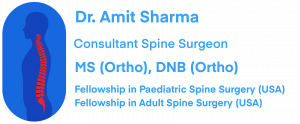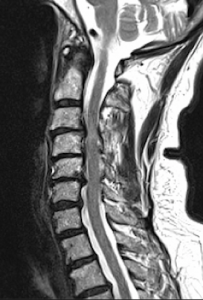Best Spine Surgeon in Mumbai | Dr. Amit Sharma

+91-9967600461
draks777@gmail.com
Spondylosis and Spondylitis

Spondylosis and Spondylitis
Deciphering the Difference Between Spondylosis vs. Spondylitis
In the world of spine health, terms like spondylosis and spondylitis often get thrown around, sometimes interchangeably. These terms can be confusing, but understanding the distinctions is crucial for accurate diagnosis and effective treatment. In this comprehensive guide, we’ll demystify the differences between cervical and lumbar spondylosis, as well as spondylitis. We’ll also delve into why these terms are often used interchangeably by the general population.
Part 1: Spondylosis vs. Spondylitis – The Basics
Spondylosis: The Degenerative Dilemma
Spondylosis, also known as spinal osteoarthritis, is a degenerative condition that primarily results from the natural aging process and wear-and-tear on the spine over time. It’s a common occurrence, particularly as we grow older. This condition can affect various regions of the spine, including the cervical (neck), thoracic (upper back), and lumbar (lower back) areas.
Common Symptoms of Spondylosis Include:
- Pain: Often characterized by persistent pain in the affected area.
- Stiffness: Reduced flexibility and mobility in the spine.
- Reduced Range of Motion: Difficulty in moving the spine freely.
- Bone Spurs: Formation of bone spurs (osteophytes) in response to degeneration.
- Spinal Stenosis: Narrowing of the spinal canal, which may compress nerves.
Spondylitis: The Inflammatory Intrigue
Spondylitis, on the other hand, is an inflammatory condition that affects the spine. The most common type is ankylosing spondylitis, which is an autoimmune disease where the body’s immune system mistakenly attacks the spine and other joints. Other types of spondylitis include psoriatic spondylitis and reactive spondylitis, which can be triggered by infections.
Common Symptoms of Spondylitis Include:
- Inflammation: Characterized by chronic inflammation of the spine and sacroiliac joints.
- Pain: Persistent pain, often starting in the lower back and radiating upward.
- Stiffness: Reduced spinal mobility, especially in the morning.
- Vertebral Fusion: Over time, it can lead to the fusion of vertebrae, resulting in reduced mobility and a stooped posture.
- Extra-articular Symptoms: Spondylitis can also affect other joints, eyes, and organs.
Part 2: Cervical vs. Lumbar – The Location Matters
Now that we’ve distinguished between spondylosis and spondylitis, let’s explore how these conditions manifest in the cervical and lumbar regions.
Cervical Spondylosis vs. Lumbar Spondylosis:
Cervical Spondylosis: This occurs in the neck area and is often associated with symptoms such as neck pain, stiffness, and reduced range of motion. In severe cases, it can lead to issues like cervical radiculopathy, where nerve compression causes pain and numbness in the arms and hands.
Lumbar Spondylosis: Lumbar spondylosis affects the lower back and is characterized by symptoms like lower back pain, reduced flexibility, and sometimes sciatica—pain radiating down the legs due to nerve compression. It can also lead to spinal stenosis, causing leg pain with walking or standing.
Part 3: The Interchangeable Use of Terms
One reason spondylosis and spondylitis are used interchangeably by the general population is the complexity of these medical terms. People may not always understand the nuanced differences between these conditions, leading to the broad use of the term “spondy” to describe any spine-related discomfort.
Moreover, both spondylosis and spondylitis can cause chronic pain and stiffness, which are common complaints among those with spine issues. This shared symptomatology further blurs the lines between these conditions in everyday language.
Part 4: Conclusion – Knowledge is Key
Understanding the disparities between cervical and lumbar spondylosis vs. spondylitis is essential for accurate diagnosis and effective treatment. If you or someone you know is experiencing spine-related symptoms, seek professional medical advice for a proper evaluation.
By shedding light on these distinctions, we hope to empower individuals to make informed decisions about their spinal health. Remember, knowledge is the first step towards achieving a healthier, pain-free spine.
For more information on spine health or to consult with a leading spine specialist in Mumbai, contact Dr. Amit Sharma today on +91-9967600461 or draks777@gmail.com